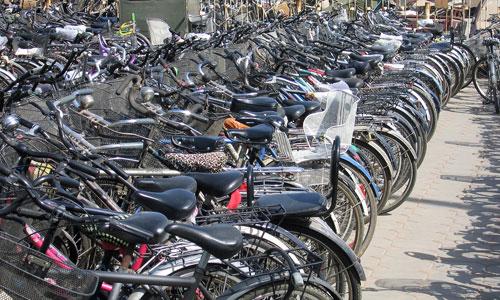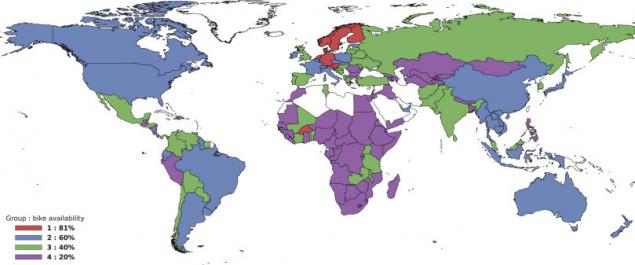861
Over the past 30 years the number of bicycles in the world has fallen by 2 times - even without India and China

Researchers from Johns Hopkins University (USA) published in the journal & quot; Transport and Health & quot; work , from which the should , that over the past 30 years the number of households using to move the bike fell about two times. The aim of the study was to calculate the patterns of distribution of bicycles by country and to find ways to increase the effectiveness of promoting their use.
Promoting the use of bicycles is beneficial not only for health, but also helps conserve non-renewable resources and environmental improvement. Most often, it makes sense to promote bicycle transport in those countries where it is most developed, but other than that the index is always useful to trace the dynamics of changes in the use of bicycles in time.
It was the largest in many years study on the use of bicycles. The statistics were 1, 25 billion households in 150 countries worldwide, and the number of bicycles monitored from 1981 to 2012. It turned out that in some countries, even the use of bicycles has increased over time, but in the other - fell sharply. The average number of them, unfortunately decreased.
According to the study, the bikes have an average of 42% of households - that is at least 580 million bicycles in the world. Most of all as a percentage of the number of households in the north of Europe and Central Asia.

The availability of bicycles by country i>
Thus in absolute terms the biggest bike is in China and India - in the most populated countries in the world. And these countries have a strong impact on the global averages. Racing number of bicycles in relation to the number of households in China have been quite significant. In 1992, the bike was more than 97% of families. In 2007 - only 49%. By 2009, that number has grown again to 63%.
But even if we exclude the most populated India and China from the statistics, it is appears that the number of bicycles in the world is constantly decreasing. In 1989, 60% of households had a bicycle. But by 2012, this figure was already 32%.
The researchers also divided the country conditional on the number of households owning bicycles into 4 groups. In the first, the most "bicycle" group were the countries with the highest number of bicycles - owning their families in this group of countries (and there are a total of 9) on average 81% of the total. The second group (34 countries) have entered the country with an average of 60 percent, in the third - 40% (45 countries), in the fourth - 20% (62 countries).
In general, countries with a similar percentage of proved located close to each other. But there were identified and interesting exceptions - for example, Burkina Faso has got in group 1, while being surrounded by countries from the groups 3 and 4. Such examples and indicate where there is an effort to the promotion of cycling among the population.
Source: geektimes.ru/post/266896/
"Philosophy and psychology of sex"
Hawaii State Court quashed a building permit Thirty Meter Telescope























